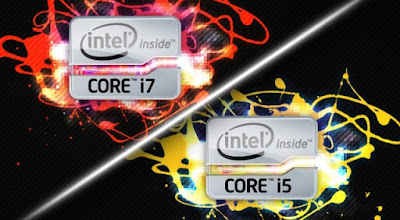Whether you’re developing your next PC or purchasing for a new laptop or computer on the internet, one of the concerns that comes up every now and then is whether the Apple Primary i5 or Primary i7 is a better cope. The brief response, “It relies upon,” isn’t all that beneficial, so we’ve damaged the information out in more details and for both cellular and desktop laptop or computer processor chips. Here’s what you need to know.
Mobile Primary i5 vs. Mobile Primary i7
Because Apple has launched a affordable set of SKUs for its 5th creation (Broadwell) components, we’ll use those snacks for evaluating the Primary i7 vs. Primary i5 collection. All of Intel’s cellular Primary i5 processor chips are dual-core snacks with Hyper-Threading, going right returning to Exotic Link. What differentiates contemporary 5th creation Primary i5s is their TDPs — Apple provides Broadwell in 15W, 28W, and only one 47W SKU. That processor, the Primary i5-5350H is also able of dealing with 32GB of RAM and provides Intel’s Eye Pro 6200 remedy depending on Amazingly Well.
Here are the functions that individual cellular Primary i5 and Primary i7 processors:
More cores: Many of Intel’s Primary i7 processor chips are quad-core snacks with Hyper-Threading allowed. This isn’t worldwide, however, and the organization does provide five dual-core + Hyper-Threading SKUs.
Higher clocks: Intel’s dual-core cellular Primary i7 snacks usually have greater time prices than their Primary i5 alternatives, even at the same TDP. The quickest dual-core Primary i7 at 15W TDP is the Primary i7-5600U, which operates at 2.6GHz platform and 3.2GHz conventional. The quickest Primary i5 at 15W is the Primary i5-5300U, which has a platform duration of 2.3GHz and a max duration of 2.9GHz. The GPU on the Primary i7-5600U is clocked 50MHz quicker as well.
More cache: Primary i7 snacks bring either 6MB or 4MB of storage cache. Primary i5 snacks have 3MB, except for the Primary i5-5350H, which has 4MB.
More addressable memory: Most of the Primary i7 snacks are restricted to 16GB, like the Primary i5, but there are four exclusions. The Primary i7-5850HQ, 5950HQ, 5750HQ, and 5700HQ are all able of dealing with up to 32GB of RAM.
One essential factor to observe, however, is that how much efficiency you get out of a Primary i5 vs. a Primary i7 will rely a lot on your laptop’s chilling remedy and whether or not the processor can manage its own warm outcome. We’ve mentioned how Apple provided OEMs more independence to determine their own TDP objectives and epidermis temperature ranges, but this creates circumstances in which purchasing a quicker Primary M can actually outcome in more intense efficiency as the processor strikes its warm journey factor and down-throttles to keep awesome.
We can’t factor to particular circumstances where this has angled efficiency between Primary i5 and Primary i7 snacks, but it’s likely to create at least a little “slosh” between the two core near relatives members. Generally, if you truly want to highlight low energy, choose the CPU that has reduced platform and turbocompresseur travel alarm clocks. Apple traditionally described TDP as “The CPU’s regular energy intake when operating common workloads over a moment interval.” A processor with more headroom is a processor that’ll hit its accelerator factor quicker.
Desktop Primary i5 vs. Desktop Primary i7
Because Apple has only launched a few Primary i5 and i7 desktop laptop or computer areas, for now we’ll concentrate on the 4th creation cores (Haswell). One factor between the desktop laptop or computer and cellular marketplaces is that all but one of Intel’s 23 Primary i5 SKUs provide four cores, but no HyperThreading. Intel’s Primary i5-4570T is the individual exemption to this — it’s a dual-core + HyperThreading processor. Another distinction between the cellular collection vs. the desktop laptop or computer cores is that the desktop laptop or computer editions of both the Primary i5 and Primary i7 formally top out at 32GB of addressable storage.
In reality, many of the variations we noticed between cellular areas don’t implement to desktop components. The i7 near relatives still provides more L3 storage cache (8MB, preserve for the Primary i7-4770R, which has 6MB), as as opposed to Primary i5 near relatives, which has 6MB of storage cache on every processor except for the Primary i5-4570R, 4570 and 4670R, which have just 4MB. Clock prices are a combined bag — while the quickest Haswell Apple producers is the Primary i7-4790K at 4GHz platform efforts and 4.4GHz Turbo, the Primary i5-4690K is which is 3.5GHz platform and 3.9GHz Turbo — basically similar to the Primary i7-4770K.
Both the Primary i3 and Primary i5 near relatives members use Apple HD Design 4600 remedy with the same 350MHz platform efforts and 1.2GHz highest possible time. Apart from Hyper-Threading and some little storage cache variations, the Primary i5 and Primary i7 are quite identical, with the actual regularity varies and function places. Assistance for Intel’s TSX-NI guidelines is only available on one Primary i5 SKU, but only two Primary i7’s provide the ability.
Similarly, Apple only provides vPro on 13 of the 23 Primary i5 SKUs, in evaluation to 9 of the 12 Primary i7 SKUs — but if you want vPro on a Primary i5, you can get it.
What about performance?
To evaluate efficiency between the Primary i5 and Primary i7 near relatives members, I converted to Anandtech’s outstanding CPU Regular data source. While AT doesn’t have information on every processor launched by Apple or AMD, they’ve got a very strong choice of similar areas. I decided to examine the Primary i5-4690K vs. the Primary i7-4770K. The 4770K has Hyper-Threading, a platform regularity of 3.5GHz, can Turbo up to 3.9GHz, and has 8MB of L3 storage cache. The Primary i5-4690K has one time amount but no HT and just 6MB of L3 storage cache. That’s about as ideal a match-up as you can ask for.
The chart below was produced by evaluating Primary i5 and Primary i7 in each and every conventional and getting the geometrical mean of the outcomes. This reduces the impact of outliers (though in this situation, the mathematics and geometrical indicates are quite near to each other). I’ve divided the information into three segments — common estimate, activity playing efficiency with 1x GTX 770, and activity playing efficiency with the GTX 770 in SLI.
There are some variations in the information places that we need to talk about. The total General Objective amount doesn’t indicate the impact HT can have on various applications. There are a variety of applications where HT does not matter, a few where it reduces efficiency (though never by more than 8 percent) and a several standards that display benefits of 10-30%. If we set a 3% limit for a attaching ranking, Hyper-Threading gives the Primary i7 a win in 21 out of 36 assessments. It connections the Primary i5 in 14 assessments, and drops to it overall in just only one conventional (x264).
In work area and customer CPU workloads HT sometimes allows a lot, sometimes doesn’t help much at all, but almost never affects.
Gaming, however, is a very different creature. In activity playing, Hyper-Threading never provides only one efficiency increase, while it affected BioShock Infinite’s lowest FPS by 11% (meaning the Primary i5 outscored the i7). The net impact is a 2% efficiency reduce for Hyper-Threading.
In SLI activity playing, we see a identical design, though now it’s different activities that take efficiency strikes. The lowest structure amount for Resting Pets was 10% quicker on the Primary i5 (56 vs. 61.8) and 5% quicker in BF4 (86.4 vs. 82.9).
What this implies, in total, is that while Hyper-Threading probably doesn’t harm activity playing in most headings, you can’t rely on it to provide a essential efficiency increase, either.
What about AMD?
AMD isn’t a official aspect of this content, but since I know individuals will ask, I took a look at how the FX-9590 analyzes against the Primary i5-4690K. The information is not particularly outstanding. There are a few well-threaded standards where AMD can glow, such as WinRAR, x265 development, multi-threaded Cinebench (both 11.5 and R15) and 7zip. The FX-9590 happens to be not capable of related the 4690K’s single-threaded efficiency, which indicates AMD drops every analyze that can’t range to eight cores or is single-threaded to begin with.
The gap between AMD and Apple in activity standards has a smaller footprint sized than in common CPU efficiency, and AMD’s FX-8350 and FX-9590 are able of forcing completely appropriate structure prices, but the FX-9590 never outclasses the Primary i5-4690K in any analyze. If you’re making a sport playing box and you want to go AMD, you definitely can — but lb for lb and watts for watts, the Primary i5 victories this competitors.
Which processor should you buy?
Right now, the Primary i5 operates from $184 to $249 (oddly, the Primary i5-4690K is actually less expensive than the Primary i5-4670K, at $239). The Primary i7 near relatives, in evaluation, travel alarm clocks in at $304 to begin with and goes up to $346.95. Again, the Primary i7-4790K is better cost ($339) than the Primary i7-4770K at $346.95. The Primary i7-4790K is 1.39x more costly than the Primary i5-4690K, but the efficiency benefits you see will be extremely reliant on how you use the CPU. If you strategy to do movie modifying, 3D making, Handbrake or do a lot of data file decompression and pressure, or you use particular applications that you know advantage from Hyper-Threading, then the more costly Primary i7 may be well value the cash. If you’re mostly looking to activity, however, the Primary i5 may be a better option.
DirectX 12’s upcoming launch could provide the Primary i7 a opportunity to confirm itself, but DX12 activities will outflow on to the industry, not overflow it. DirectX 11 and DX9 will stay essential APIs for decades to come, which indicates we have to delay and see which headings provide DX12 support and how it changes the Primary i5 / Primary i7 evaluation.
It’s more complicated to create this contact on cellular. Inadequate chilling will impact any laptop laptop or computer and some of the store laptop computers available on the industry can be bought with CPUs that they can’t probably keep awesome. I usually advantage the Primary i5 over the Primary i7 for cellular activity playing because it allows protect battery power and still provides outstanding overall efficiency. CPU option is just one factor of a laptop laptop or computer — just bear in mind that higher-end CPUs may not provide much of their predicted efficiency if the framework isn’t well developed for the processor it’s holding.















